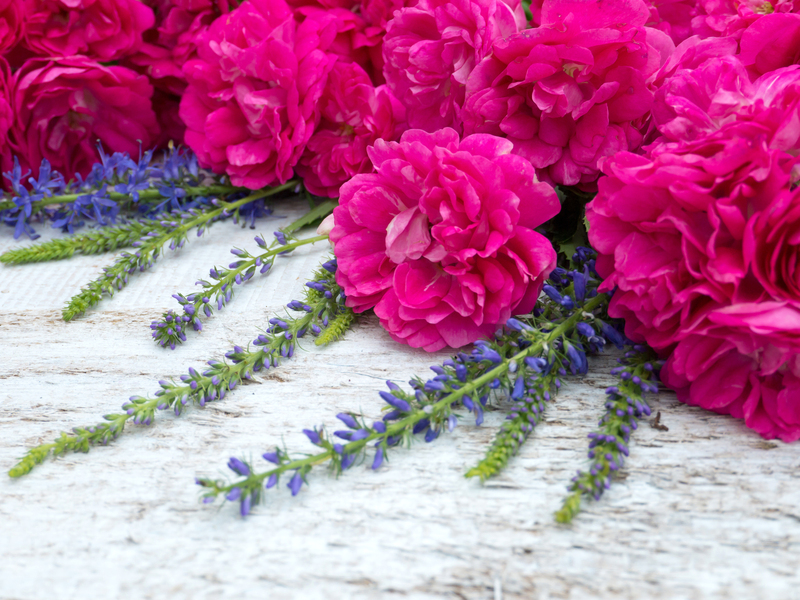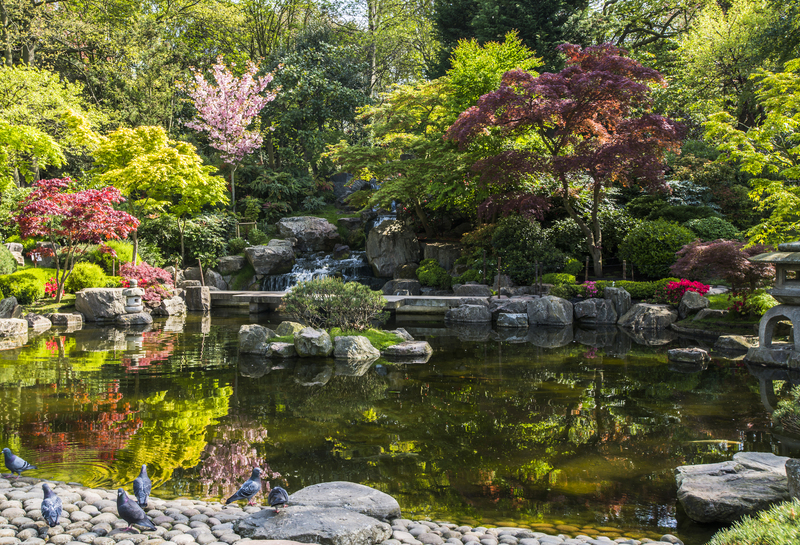Top Window Box Plants That Bring Butterflies and Bees to Your Sills
Imagine looking out your window to see fluttering butterflies and buzzing bees enjoying a vibrant display of flowers directly on your window sill. Window box gardening not only beautifies your home, but also provides crucial support for local pollinator populations. This guide will walk you through the very best window box plants for attracting butterflies and bees, so you can create a lively, pollinator-friendly oasis outside any window.
Why Attracting Butterflies and Bees to Your Window Boxes Matters
Both bees and butterflies are essential pollinators that play vital roles in healthy ecosystems and food production. Urbanization, pesticide use, and habitat loss have caused a significant decline in their populations. By adding butterfly and bee-friendly plants to your window boxes, you provide a much-needed refuge while enjoying nature from the comfort of your home.
Key Benefits of Planting Pollinator-Friendly Window Boxes
- Supports local bee and butterfly populations
- Adds vibrant color and fragrance to your windowsills
- Boosts ecosystem health by encouraging pollination
- Offers educational and relaxing nature observation opportunities
- Improves the curb appeal and value of your property

What Makes a Good Window Box Plant for Pollinators?
Not all plants are equally attractive to pollinators. To lure butterflies and bees to your window sills, choose plants that:
- Produce abundant, nectar-rich flowers
- Feature bright colors (especially blues, purples, yellows, and pinks)
- Have open or shallow flower shapes for easy access to nectar
- Offer blooms throughout the spring, summer, and early autumn
- Are ideally native or well-adapted to your climate
Tip: Combine a variety of flowering times and colors in your window box for maximum pollinator appeal.
Top Flowering Window Box Plants for Pollinators
Let's explore the best window box plants that attract butterflies and bees, along with their unique benefits, care requirements, and standout qualities.
1. Lavender (Lavandula)
Widely cherished for its lovely fragrance and delicate purple blooms, lavender is a favorite among both bees and butterflies. Its compact growth makes it perfect for window boxes, and it thrives in sunny spots with well-drained soil.
- Pollinators attracted: Honeybees, bumblebees, many butterflies
- Bloom time: Late spring through late summer
- Bonus: Deer-resistant and dries beautifully for sachets
- Sun requirement: Full sun
2. Verbena (Verbena spp.)
Verbena provides clusters of brightly-hued, nectar-packed blossoms all season long. This hardy flowering plant attracts a wide range of butterflies, especially swallowtails and skippers, as well as various bee species.
- Pollinators attracted: Monarchs, swallowtails, native bees
- Bloom time: Early summer through frost
- Bonus: Long-lasting color and drought tolerance
- Sun requirement: Full sun
3. Alyssum (Lobularia maritima)
Sweet alyssum forms lush, cascading mat of tiny white, lavender or pink flowers with a honey-like scent. Not only does it look lovely spilling over a window box, but it's also highly attractive to bees and butterflies.
- Pollinators attracted: Honeybees, various butterflies, hoverflies
- Blooms: Spring through fall
- Bonus: Tolerates partial shade; low-maintenance
- Sun to Partial Shade
4. Marigold (Tagetes spp.)
Marigolds are beloved for their vibrant orange and yellow blooms that provide rich nectar, especially for butterflies and native bees. Their robust, compact growth suits window containers, while their aromatic foliage helps deter pests.
- Pollinators: Butterflies, bees, beneficial insects
- Bloom time: Summer through first frost
- Bonus: Pest-repellent and easy to grow
- Sun: Full
5. Salvia (Salvia splendens, Salvia farinacea)
Salvias are prolific bloomers that draw bees, butterflies, and even hummingbirds. Their upright, spiky blooms come in shades of blue, purple, red, and white, adding drama to any window box.
- Pollinators attracted: Native bees, hummingbirds, butterflies
- Bloom time: Summer through fall
- Bonus: Heat and drought tolerant
- Full sun to partial
6. Zinnias (Zinnia elegans)
Zinnias are famous for their vibrant, daisy-like flowers in nearly every shade imaginable. The simple flower structure makes nectar easily accessible, drawing swarms of bees and butterflies, especially monarchs and painted ladies.
- Pollinators attracted: Monarchs, painted ladies, bees
- Bloom time: Early summer through frost
- Bonus: Easy to grow, even for beginners
- Full sun
7. Cosmos (Cosmos bipinnatus, Cosmos sulphureus)
Wafer-thin petals and delicate foliage define cosmos. The open blossoms are particularly irresistible to bees and various types of butterflies. Cosmos will fill any window box with elegant, airy charm.
- Pollinators attracted: Bees, butterflies, hoverflies
- Bloom time: Mid-summer through frost
- Bonus: Tolerates poor soil and dry conditions
- Full sun
8. Pentas (Pentas lanceolata)
Known as Egyptian Star Cluster, pentas produce clusters of star-shaped blooms in purple, red, and pink hues. Highly favored by both butterflies and bees, pentas are long-blooming and heat-loving, fitting nicely in sunny window boxes.
- Pollinators attracted: Monarch butterflies, swallowtails, bees
- Bloom time: Spring to frost
- Bonus: Very low maintenance
- Full sun
9. Nasturtium (Tropaeolum majus)
Nasturtiums are cheerful annuals with showy edible flowers in yellows, reds, and oranges. The blooms attract both large bees and butterflies, while their trailing habit looks fantastic spilling over window boxes.
- Pollinators: Bees, butterflies
- Bloom time: Early summer through frost
- Bonus: Leaves and flowers are edible and peppery-tasting
- Full sun to partial shade
10. Lantana (Lantana camara)
Lantana's clusters of small, multicolored flowers keep blooming in heat and drought. Lantana is a magnet for butterflies from swallowtails to monarchs, as well as native bees.
- Pollinators attracted: Numerous butterfly species, bees
- Bloom time: Spring through frost
- Bonus: Heat and drought tolerant, long flowering period
- Sun: Full
Companion & Supporting Plants for Pollinator Window Boxes
While floral abundance is key, a few additional plant choices can further enhance your window box garden's pollinator appeal:
- Herbs: Thyme, oregano, basil, chives all bloom in summer and entice bees with their tiny flowers.
- Milkweed: The ultimate monarch butterfly host plant. Consider dwarf varieties for small spaces.
- Sedum: Especially autumn-blooming types, which offer late-season nectar.
- Scabiosa, Gaura, Bidens: Lesser-known but wonderful for nectar-rich blooms.
Tips for Creating a Successful Pollinator Window Box
To ensure your window box is both pollinator-friendly and attractive, follow these essential tips:
- Choose the right location: Most pollinator plants require at least 6 hours of sunlight. Look for sunny east-, south-, or west-facing windows.
- Use quality soil and regular feeding: Since window boxes dry out quickly, utilize moisture-holding, nutrient-rich potting mix and supplement with organic fertilizer.
- Water regularly: Keep soil evenly moist, but ensure good drainage to avoid root rot.
- Provide continuous bloom: Mix early- and late-season bloomers for nectar availability through the year.
- Go pesticide-free: All pesticides can harm pollinators--even organic ones. Remove pests by hand if necessary.
- Incorporate a variety of flower shapes and colors: A diverse window box will attract a wider range of bees and butterflies.
Safety Note for Urban Window Boxes
If you live in a very urban area, check that your window box installation is secure and won't pose a hazard. Lightweight plastic or fiberglass containers are ideal for ledges or upper-floor sills.
Best Practices for Attracting Pollinators to Your Window Sill Garden
- Cluster flowers in groups (rather than singles) to make them more visible and inviting to pollinators
- Deadhead spent blooms regularly to promote reblooming and a tidy appearance
- Avoid double blooms, which often lack nectar and pollen--opt for single or semi-double flowers
- Pair annuals (for long bloom) with perennials (for sustainability)
- Add small, shallow saucers of water or stones for bees and butterflies to drink
Frequently Asked Questions About Window Boxes for Butterflies and Bees
Do I need to be concerned about attracting bees near my windows?
Generally, window box plants host solitary bees and non-aggressive pollinators. Honeybees and butterflies focus on the blooms rather than coming indoors. To minimize risk, avoid planting directly adjacent to doors or high-traffic windows.
Can window boxes survive in partial shade?
Yes! While most pollinator plants prefer sun, alyssum, nasturtium, violas, and certain herbs will bloom and attract pollinators in locations with 3-6 hours of light.
What size window box is best for butterfly and bee plants?
The larger the window box, the better for root growth and bloom variety. A minimum depth of 8 inches and width of 6-8 inches is ideal for most window box annuals.
How can I maintain blooms through the summer?
Combine early, mid-, and late-season bloomers. Deadhead spent flowers regularly and fertilize monthly with a diluted, organic liquid fertilizer.

Design Ideas: Stunning Pollinator Window Box Combinations
- Classic lavender and sweet alyssum: Purple spikes and trailing white flowers attract both bees and butterflies.
- Zesty zinnias, cosmos, and pentas: Bold colors and continuous blooms are magnets for monarchs.
- Herb garden box: Flowering chives, oregano, sage, and thyme--attractive to pollinators and delicious for your kitchen.
- Lantana, marigolds, and nasturtium: Heat-tolerant favorites in sunny windows, offering a painterly blend of hues and fragrances.
Conclusion: Grow a Lively Pollinator Paradise on Your Sills
Beautifying your home with window box plants that attract butterflies and bees delivers visual delight, supports local biodiversity, and turns your window into a living nature show. By choosing the right mix of vibrant, nectar-rich plants and tending them with eco-friendly care, you can welcome fluttering wings and gentle buzzing right outside every window--no matter how small your space. Start your pollinator garden today and make your sills a beacon for beautiful, vital wildlife!
Related keywords:
window box flowers for bees, window box flowers for butterflies, pollinator plants for window sills, attract pollinators to window boxes, best flowers for bees and butterflies, butterfly-attracting windowbox plants, bee-friendly flowers for containers, urban pollinator gardening.